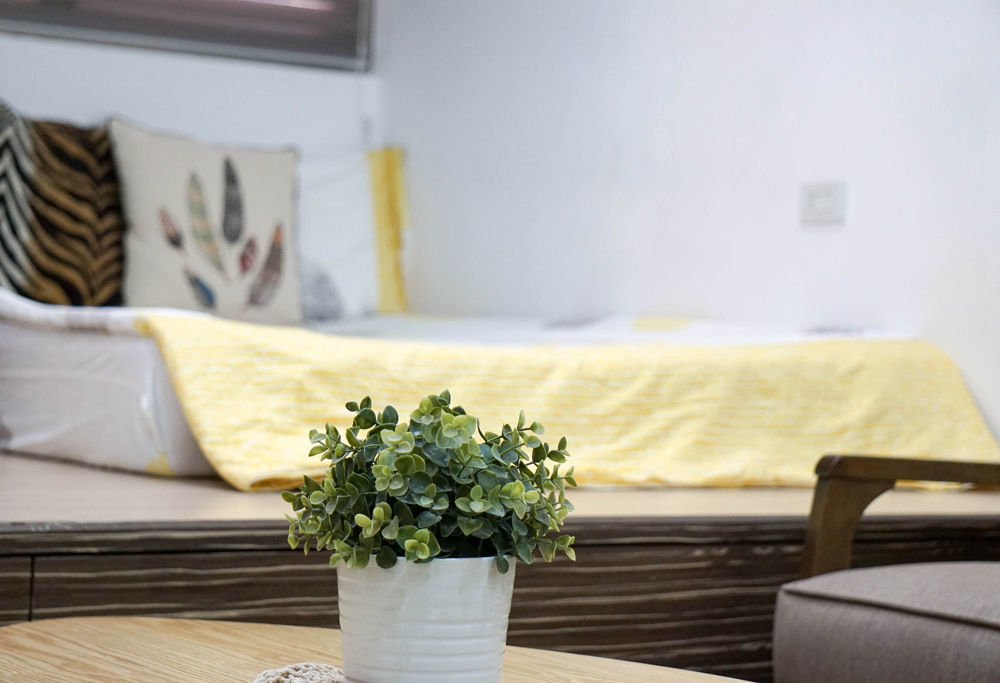
In the UK, we do not often get the weather to sit outside and enjoy our gardens, so when we do we all want to make the most of it. That is why garden furniture is now as popular as ever, with millions of homeowners wanted to enjoy the outdoors and the beautiful relaxation it provides. Unfortunately, our climate often means that when we do finally get outside, our outdoor garden furniture can take a battering from the weather, which is why protecting garden furniture is crucial if you want to get long-term use out of it and keep it looking its best. In this guide we are going to cover everything you need to know about protecting outdoor furniture, so you can keep enjoying them year after year.
Why It Is Important To Protect Outdoor Furniture
The sales of garden furniture in the UK each year is estimated to be as high as £1.5 billion, so protecting outdoor furniture is a priority for many homeowners after they have invested their hard earned money. Outdoor furniture can come in a range of forms, including benches, dining sets, lounging chairs, parasols & sofa sets. They also come in range of materials from fabrics such as cushions and canopies to woods such as benches and chairs, with all of these variations meaning that the best way to protect outdoor furniture will vary immensely from item to item.
One thing that is consistent when it comes to protecting outdoor furniture is the need to withstand weathering. Moisture is the single biggest cause of damage to exterior surfaces, whether they are masonry, roof tiles, wood, paving or fabric. When it rains, water absorbs into these exterior surfaces due to their porosity, leading to a number of problems not only relating to the performance of the substrate but also its appearance. Moisture can cause three main problems; damage, organic growth and discolouration.
DAMAGE
All exterior surfaces react to moisture differently, however when it comes to the highly porous, mineral surfaces such as wood, masonry & paving, these all become damaged when subject to high levels of moisture. When rainwater absorbs into the material, it can under-go what is known as a freeze-thaw cycle when temperatures hit freezing. The water expands when it freezes, causing movement within the material. This movement opens up cracks and gabs in the material that then allows more water to enter, thus creating continuing a cycle of damage.
When it comes to outdoor furniture, this is particularly a problem with wooden furniture, as the movement causes shrinking that warps the wood and causes it split. Moisture also leads to rotting on exterior wooden surfaces, as rot is caused by a fungus that thrives in high moisture conditions. When the wet rot sets in, it will continue to weaken the timber significantly, eventually causing chunks of wood to split off from the main structure.
Metal is slightly different to other exterior surfaces as it is not highly porous. While the metal will not absorb water like wood or fabric, it can rust and corrode. Rust develops on metal when iron reacts with oxygen in the air and water to create a compound called iron oxide. This is why metal garden furniture which is often made from iron can begin to rust over-time when exposed to the elements.
ORGANIC GROWTH
Organic growth in the same way as rot is caused by fungus, requiring high levels of moisture in order to develop. No matter the type of surface, if there is large amounts of moisture being absorbed by the material, organic growth such as mould, mildew, lichens, moss & algae will be able to develop, discolouring the surface.
Organic growth with be most prevalent on timber surfaces, such as benches and dining sets. Once the fungus begins to grow, it will slowly transfer across the timber, leaving a tired, discoloured finish that can age exterior wood significantly.
On fabric surfaces, if left exposed to the elements regularly, mould and mildew will develop inside cushions leaving both marking on the fabric and an unpleasant, musty smell.
DISCOLOURATION
Aside from organic growth, water can also cause discolouration and marking on any exterior surface. When it comes to timber, the water will darken the timber which can hinder the natural beauty of the timber. Furthermore, aside from water, exterior wood can discolour due to a process known as 'silvering'. This is when UV rays cause the natural timber to bleach, losing its pigment.
Fabric will also discolour due to water absorption, often meaning that cushions and other outdoor fabrics can look less than their best after being exposed to rainfall just a few times.
How Do You Protect Outdoor Furniture?
All exterior surfaces are different, so there is not always just one solution to protect them. Having said this, all exterior surfaces if exposed to high levels of moisture will deteriorate over-time, so the best way to protect outdoor furniture is by providing them with as much resistance to weathering as possible.
There are a wide variety of terms that get thrown around when it comes to any product you apply to an outdoor surface. The term 'weather resistant' is often used to describe a product that is designed for exterior use, but will uptake some level of moisture over-time. To be fully waterproof, a product must be water repellent, meaning any water that hits the surface will simply form 'beads' and run off the surface.
The Best Way to Protect Outdoor Wooden Furniture
Wood is a highly porous natural surface, meaning it can uptake a large amount of water if left natural and untreated. The problem with this is that a natural timber look is one of the most desired finishes for outdoor wooden furniture, often meaning that wooden furniture can have quite a short lifespan as it begins to be affected by weathering quickly.
The other problem when it comes to exterior wood is the sheer variety of products that are available, including wood paint, wood stain, wood oil, wood waterproofer and wood preserver. These products can be split into two categories; products that change the appearance of the wood and those that don't.
Wood paint, wood stain and wood oil will all alter the appearance of timber once applied, whether it is by adding a different colour to the timber or simply darkening the natural colour. While these products will provide bare, untreated wood with added protection from moisture, they will allow some level of moisture into the wood as they are not water repellent. Furthermore, these treatments often have low breathability, meaning any moisture that does enter the wood cannot naturally breathe out as they get trapped underneath the film the treatment creates. This is often what causes these products to begin to peel or flake, eventually failing completely.
Wood waterproofers and wood preservers are two examples of wood treatments that do not alter the appearance of wood. Wood preservers are often designed to be applied to wood before a decorative topcoat of paint or oil. They contain added ingredients that can discourage wood worm and organic growth, helping to protect the wood from the inside.
Wood waterproofers like Emperor Exterior Wood Waterproofer are primarily designed to provide bare, untreated wood with waterproofing protection by creating a water repellent surface on the wood that significantly reduces water absorption. Emperor Exterior Wood Waterproofer in particular absorbs into the timber chemically bonds to the material, providing it with water repellent properties rather than creating a water repellent film on the surface. This not only means that the wood stays highly breathable, but also means there is no film on the surface of the wood to weather over-time or change the appearance of the wood, which is the case with paint, stain or oil. Independent testing found that after 25 years of weathering, there was no change in performance or appearance of the wood in any way, giving it a 25 year proven performance.
Emperor Exterior Wood Waterproofer also provides bare, natural wood with UV protection, reducing fading and bleaching caused by sunlight. This maintains the natural hue of the wood, ensuring it stays looking its best long-term in all weather.

The Best Way to Protect Outdoor Fabric Furniture
The last thing you want when you have just invested thousands of pounds into a new outdoor sofa set is for the cushions to get wet and discolour. To prevent this there are a number of waterproofing products designed for fabric. These sprays create a water repellent surface on the fabric to prevent water from soaking into the surface, thus keeping it dry. Many waterproofing treatments are designed to be effective for 1-2 weeks before being re-applied as they will eventually weather off the surface of the fabric. Furthermore, some products can have low breathability, which traps moisture within the fabric, leading to mould and mildew especially in fabric cushions.
Applying a fabric treatment that is water repellent but highly breathable is crucial for keeping fabric surface protected from the elements and ultimately dry. Emperor Exterior Fabric Waterproofer creates a super hydrophobic (ultra water repellent) finish on any outdoor fabric that prevents water absorption and has anti-stain properties to keep exterior fabric looking its best. Unlike some fabric sprays that last 1-2 weeks, it is designed to perform long-term without constant re-application thanks to the way it chemically bonds to fabric.
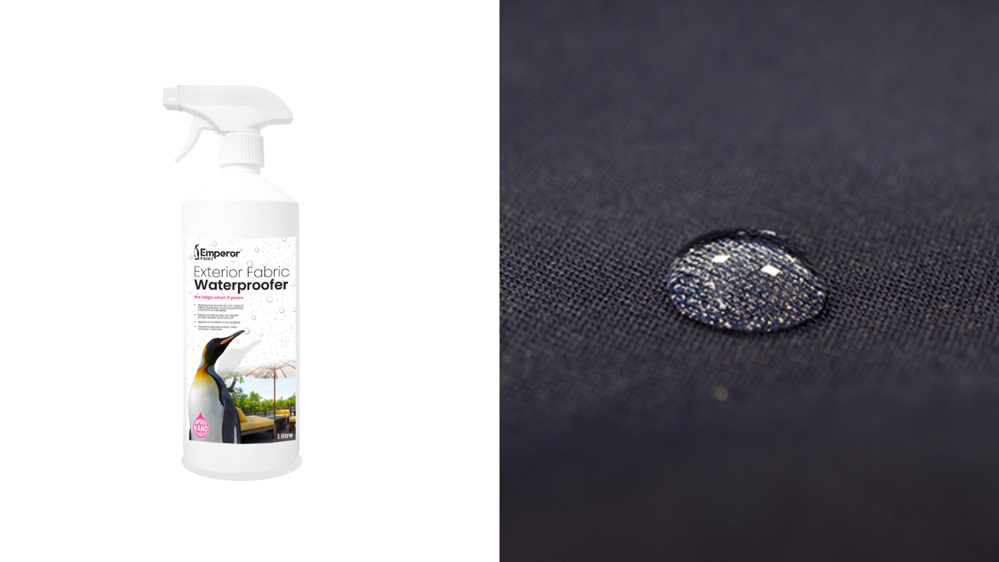
The Best Way to Protect Outdoor Metal Furniture
The type of metal will have an impact on how much it will rust and therefore require protection. Some garden furniture can come in stainless steel or galvanised steel, which are two forms of coated metal that will not rust over-time. The best way to protect outdoor metal that will corrode, such as iron, is to apply a high-quality metal paint that has anti-rust properties. By applying a high-quality metal paint, you create a protective layer on the surface of the metal that will prevent the metal from reacting with rainwater, thus keeping metal furniture from looking tired and rusty after being left outside. Many of these high-quality metal paints can even be applied directly to rust, making the process quicky and easy.
If you have a painted metal surface that has peeling and bubbling paint, this has likely been caused by water getting underneath the paint film and getting trapped by low breathability. This puts extra importance on using a good quality product that will prevent water from from entering paint film and causing paint failure.
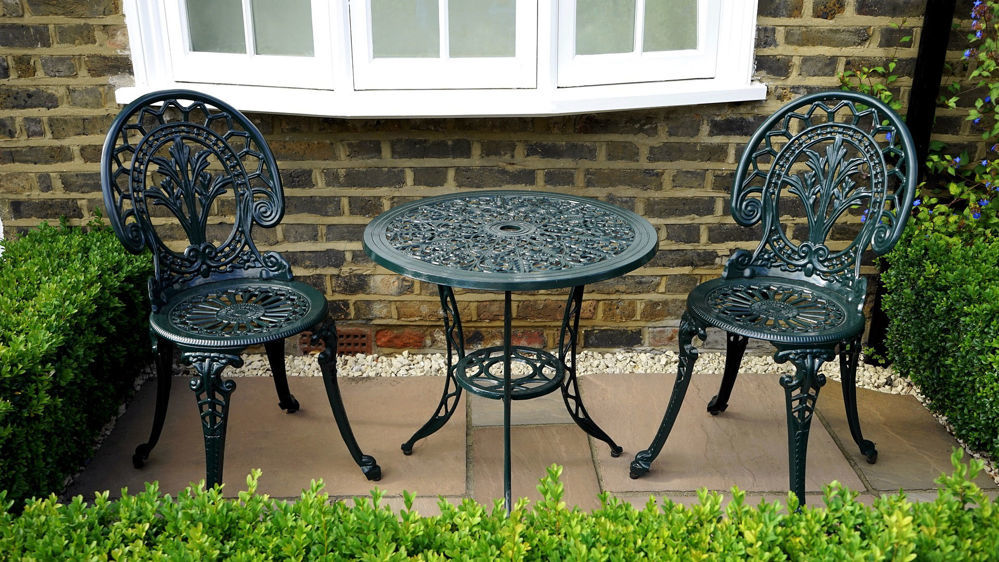
A Step-By-Step Guide To Protecting Outdoor Furniture
The process of protecting outdoor furniture will depend on the surface you are treating. In any case, the most important thing is that the surface is clean and dry before you start applying a protective treatment to it. Any dirt or moisture will simply prevent the product doing its job and leave the furniture still exposed to the elements.
Furthermore, when applying any treatment to an exterior surface, ensure you have a day where rain isn't forecast. While most protective treatments will dry within 1-2 hours, it is important to give yourself as much time as possible to complete the project without any sudden rainfall that could ruin your handy work.
WOOD
Wood as a natural substrate will likely gather dirt and organic growth over-time if left untreated. Emperor Exterior Wood Waterproofer is an invisible protective treatment, so it is crucial to clean the wood first before treating it to ensure not only it is looking its best but also that there is nothing on the surface to prevent the protective treatment from working.
Start by cleaning down the timber using a hose-pipe or a stiff brush in order to remove surface level dirt from the timber. Once this is removed, it is important to apply a fungicidal cleaner to the wooden furniture. A fungicidal cleaner such as Emperor Exterior Cleaner kills any organic growth and helps remove discolouration that has been caused. Simply apply the cleaner using a brush, roller or pump sprayer and leave it to dry for 2 hours. After 2 hours, simply wash the cleaning solution off using a hose pipe and leave the timber to dry out.
Once dry, you can then apply Emperor Exterior Wood Waterproofer to the furniture. As the treatment must absorb into the wood, it is designed for bare, untreated timber. Apply the treatment using a brush, roller or pump sprayer at roughly 5m2 per litre. You will be able to see the wood darken where applied, to help you track where you have treated. Once applied to the full surface, allow to dry for 1-2 hours at 20°C. After it has dried, you will be able to see water 'bead' on the surface of the wood and simply fall off, ensuring your wooden furniture will not rot or develop organic growth no matter the weather.
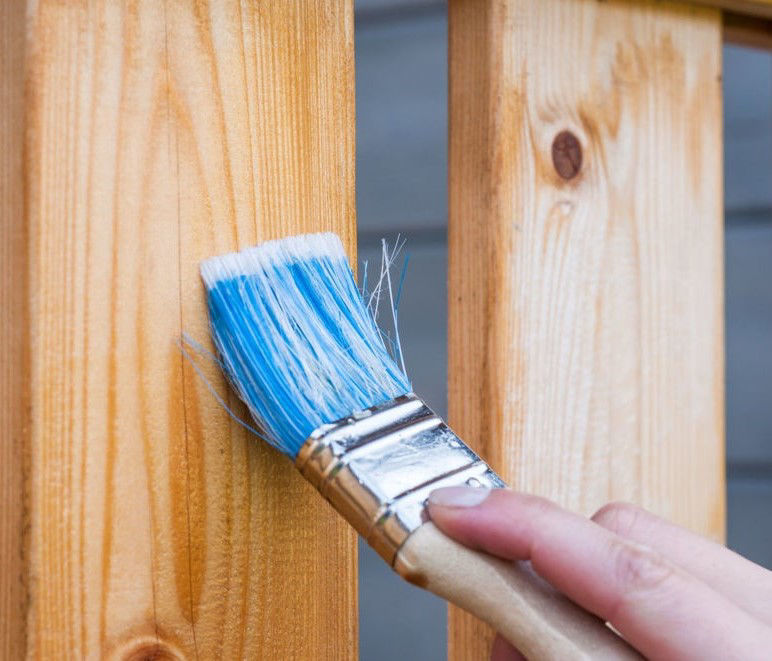
FABRIC
Before you apply anything to the fabric, you want to make sure it is clean as it will be difficult to clean once treated. Many cushions and other fabrics will have labels to say what the most appropriate way to wash them is, so make sure you check this before you do anything.
When the protective treatment to fabric, it is recommended to do a test first to see how the fabric and the product reacts. Not all fabrics are made the same, with thousands of different variations, so testing a small, discrete area is going to allow you to see what happens when the treatment is applied to the material.
Emperor Exterior Fabric Waterproofer comes in a spray bottle so can be applied quickly and easily to the fabric with tools required. The treatment can cover anywhere from 8-15m2 per litre depending on the fabric. Simply spray the treatment at roughly 6 inches from the surface and work your way around the fabric.
Once you have applied to the treatment, allow it to dry for 1-2 hours at 20°C, or slightly longer at lower temperatures.
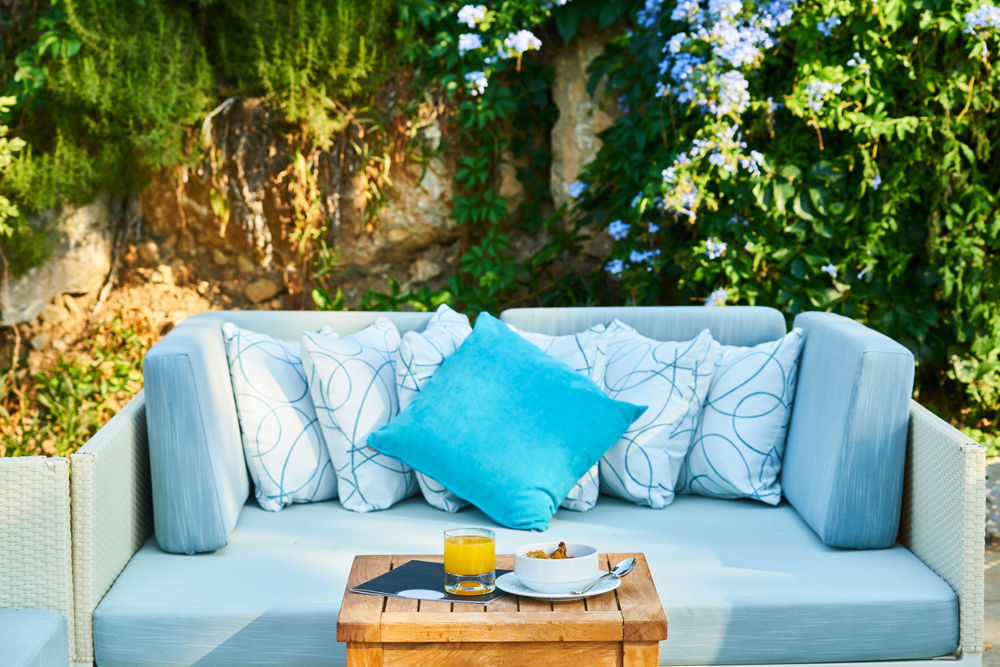
METAL
The process for protecting metal will depend on which product you use. First begin by washing the surface thoroughly to remove any dirt or dust. If there is any loose or flaking paint, remove this using a filling knife or sandpaper until you get a firm edge where no more paint can be removed.
We recommend applying a metal primer to the surface before painting, with many trade quality metal paints having their own primer that is specifically designed for use with the topcoat paint.
Once you have primed the metal, start with your first coat of paint using a brush or ideally a short-pile roller, which will help you to achieve a perfectly smooth finish on the furniture. Allow the first coat to dry as per the manufacturer's instructions, followed by your second coat of paint.
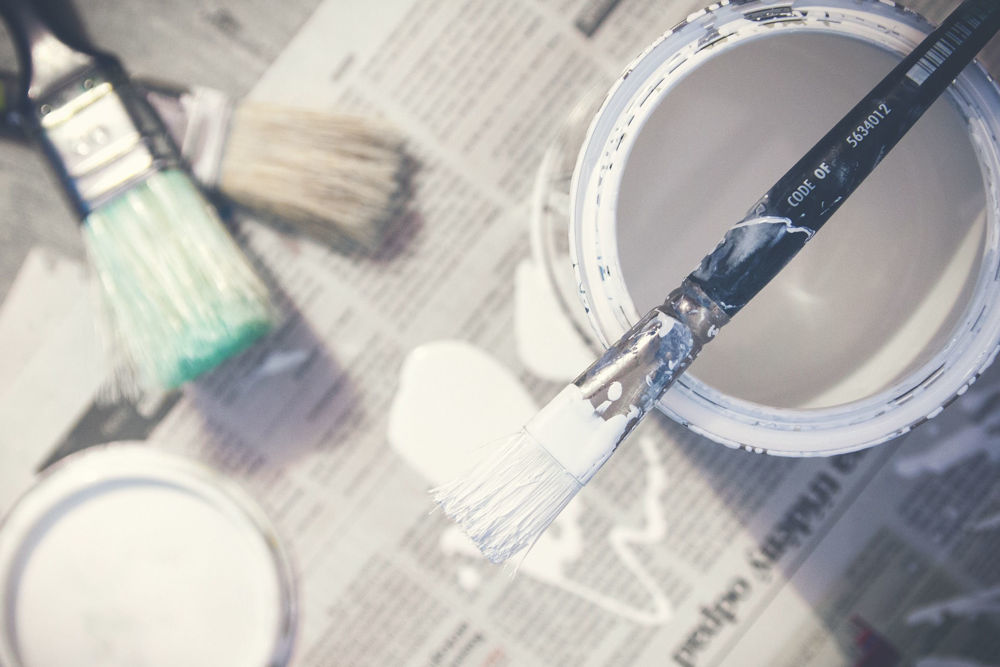
Frequently Aked Questions
Q. HOW LONG WILL THE FURNITURE STAY PROTECTED ONCE TREATED?
This depends on a number of things, such as the treatment you have used, the surface and the weather it is exposed to. A metal paint for example can last anywhere from 1-10 years depending on the quality.
When it comes to Exterior Wood Waterproofer, this has been independently tested in a 25 year weathering test. The results found that after 25 years of weathering the protective wood treatment showed no sign of change in appearance or performance since the day it was applied, meaning it passed the EAD 040287-00-04:2018 - 25 year performance Quality Standard.
When it comes to treating fabric, due to the variety of fabrics it can vary widely. Many fabric treatments are designed to be re-applied weekly, while Emperor Fabric Waterproofer is likely to only need to be reapplied on a yearly basis, on most occasions.
Q. WILL I NEED TO CLEAN WOOD ONCE PROTECTED?
Emperor Exterior Wood Waterproofer keeps wooden furniture clean in two ways. Firstly, it reduces the moisture needed for organic growth such as lichens and mildew to grow. Secondly, the super hydrophobic surface that is created makes it difficult for dirt to attach, meaning any rainfall washes away dirt and dust, making the timber self-cleaning.
Q. DO I NEED TO COVER SURFACES TO FURTHER PROTECT THEM?
The benefit of protected surfaces with a waterproofing treatment is that you do not have to cover them up if rainfall is expected. When it comes to fabrics such as cushions, it is recommended you cover these with a sheet or bring them inside if there are prolonged periods of rain, as the foam inside the cushion could gather dew over-time.
When it comes to metal and wooden garden furniture, once you have applied Emperor Exterior Wood Waterproofer you do not need to cover the furniture in order to help protect them. If there is the potential of snow, this is the time to cover any furniture as the snow and ice will stick to the furniture and allow a constant flow of moisture on the surface that super hydrophobic treatments cannot repel.
We hope we have answered any questions you may have had regarding how to protect outdoor furniture. If you have any other questions, feel free to get in touch with our team of experts who are on hand to assist you. Contact them today by emailing info@emperorpaint.co.uk or calling 0161 509 9009. Alternatively, shop our range of exterior waterproofing treatments today and get FREE delivery on all orders.

